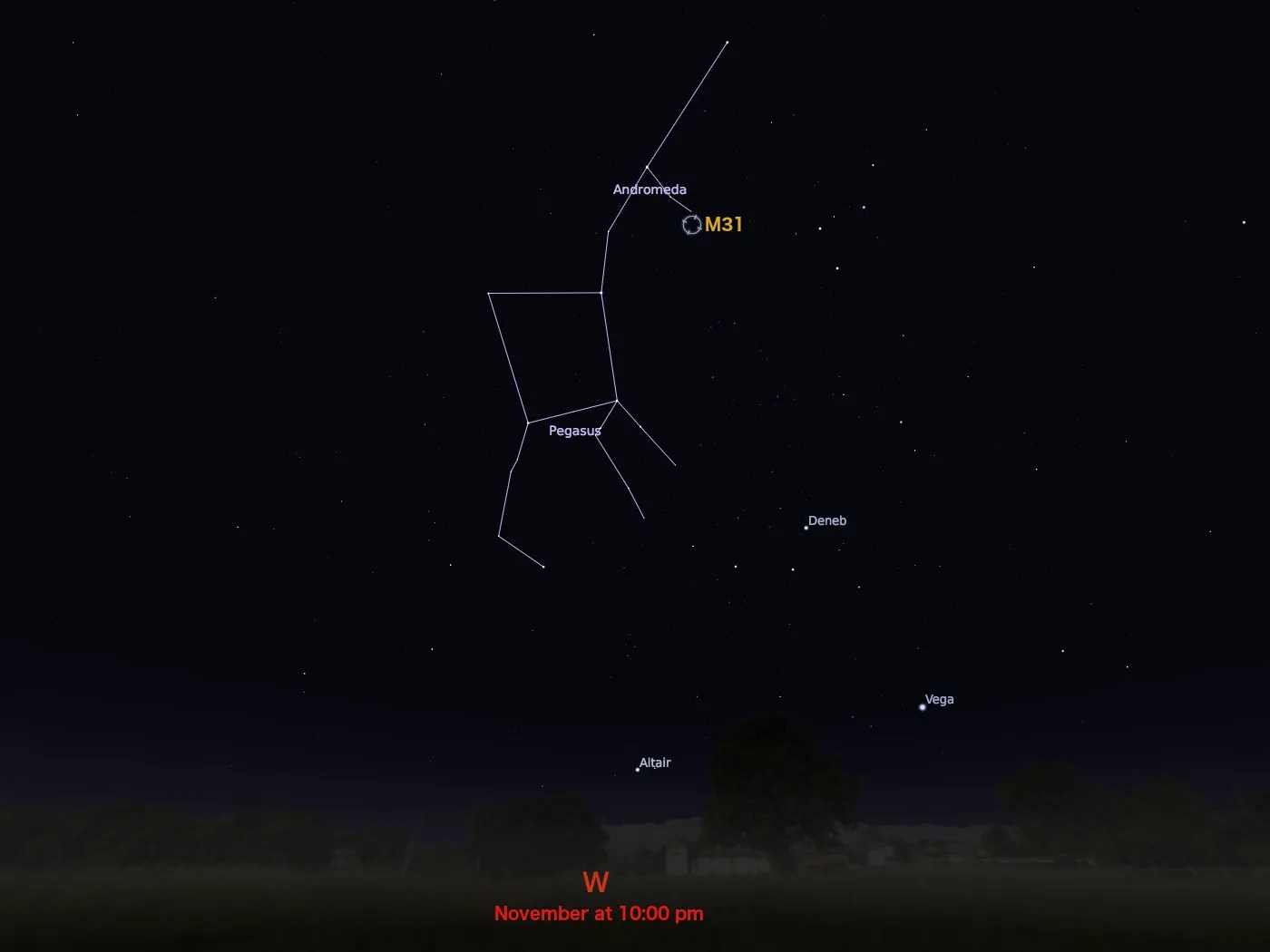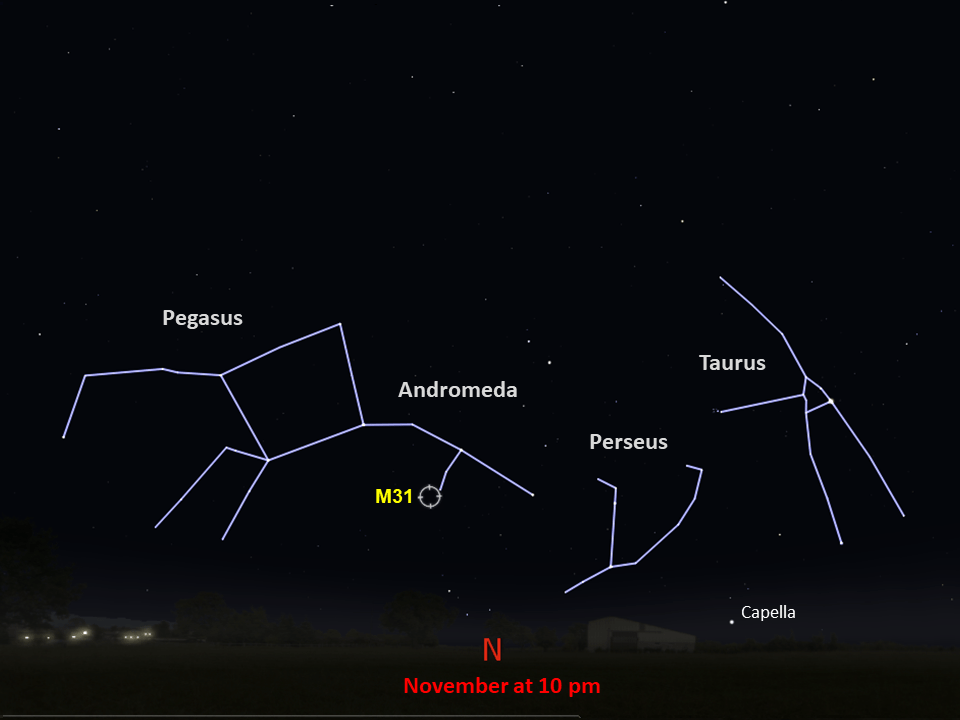Messier 31
M31, also well-known as the Andromeda Galaxy, is the nearest major galaxy to our own, the Milky Way.
Distance
2.5 million light-years
Apparent Magnitude
3.1
constellation
Andromeda
object type
Spiral Galaxy

Our neighbor, the Andromeda galaxy is a proxy for spiral galaxies in the universe at large. Astronomers would know much less about the structure and evolution of our own spiral, the Milky Way, if they didn't have Andromeda to study. That's because we are embedded inside the Milky Way. Our inside view is like trying to understand the layout of New York City by standing in the middle of Central Park.
Because of its proximity, photographing the disk of Andromeda is a herculean task. The galaxy is a much larger target on the sky than the galaxies Hubble routinely observes, which are often billions of light-years away. The full mosaic above was created with observations from two Hubble observing programs. In total, it required over 1,000 Hubble orbits, spanning more than a decade.
The panorama above started with the Panchromatic Hubble Andromeda Treasury (PHAT) program (see image below) about a decade ago. Images were obtained at near-ultraviolet, visible, and near-infrared wavelengths using the Advanced Camera for Surveys and the Wide Field Camera 3 aboard Hubble to photograph the northern half of Andromeda.

Hubble traces densely packed stars extending from the innermost hub, seen on the left side of this image, of Messier 31 (M31), the Andromeda Galaxy. Moving out from this central galactic bulge, the panorama sweeps across lanes of stars and dust to the sparser outer disk. Cooler, yellowish stars dominate the center of the galaxy, toward the lower left. The blue, ring-like feature that wraps from the upper left to the lower right is a spiral arm with numerous clusters of young, blue stars and star-forming regions. The dark silhouettes trace out complex dust structures.
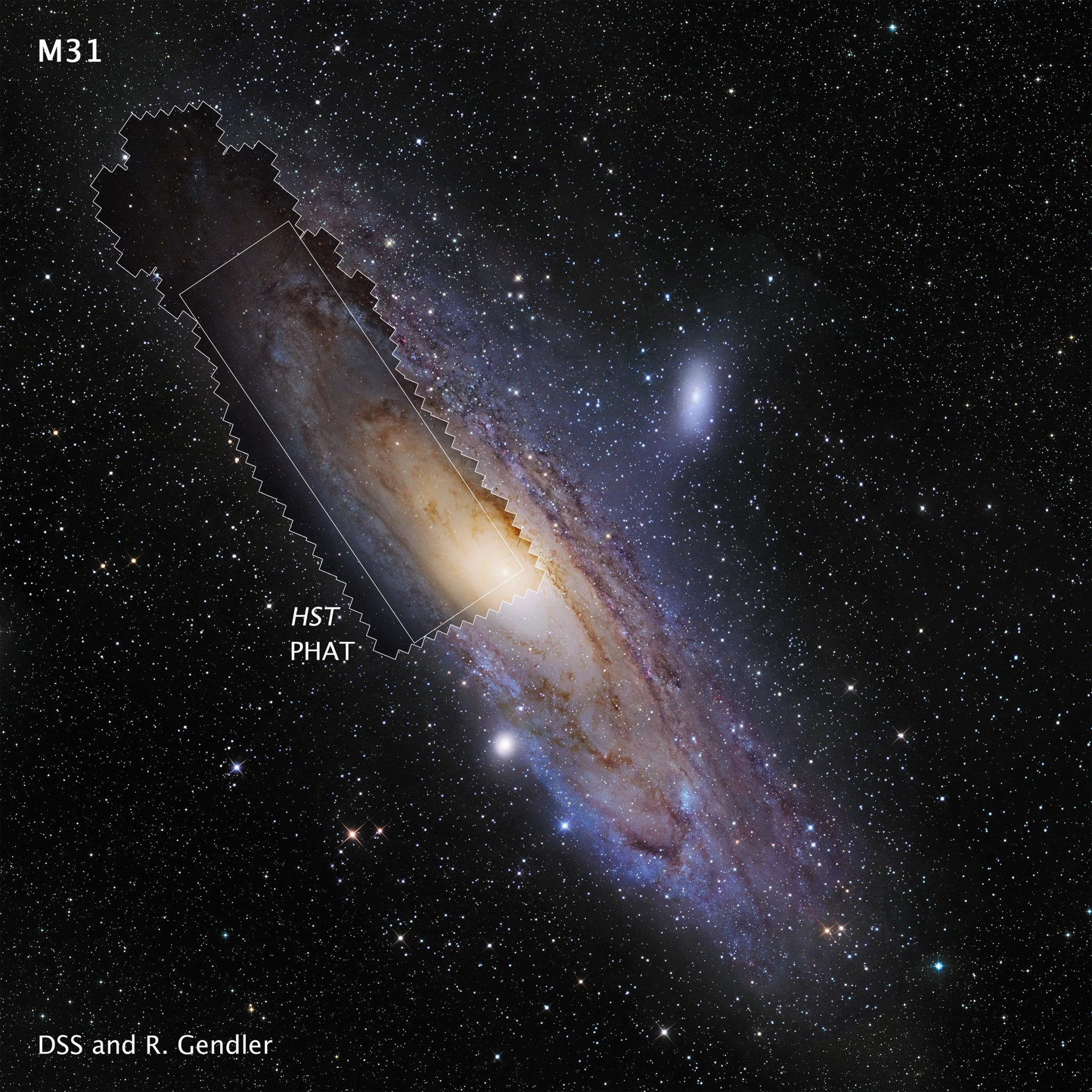

M31 is located in the constellation Andromeda and is best observed in November. Boasting an apparent magnitude of 3.1, the galaxy can be seen with the naked eye, even in areas with moderate light pollution. Because it is such an easily observed feature in the night sky, it is impossible to say who discovered the Andromeda galaxy. However, Persian astronomer Abd al-rahman al-Sufi’s The Book of Fixed Stars from the year 964 contains the first known report of the object.
For more information on Hubble’s observations of M31, see:
- NASA’s Hubble Traces Hidden History of Andromeda Galaxy
- Hubble's High-Definition Panoramic View of the Andromeda Galaxy
- NASA's Hubble Shows Milky Way is Destined for Head-On Collision with Andromeda Galaxy
- Hubble Zooms in on Double Nucleus in Andromeda Galaxy
- Rare Ultra-Blue Stars Found in Neighboring Galaxy's Hub
- Hubble Views the Star that Changed the Universe
- Hubble Finds Mysterious Disk of Blue Stars Around Black Hole
- Deepest View of Space Yields Young Stars in Andromeda Halo
- Hubble Space Telescope Finds a Double Nucleus in the Andromeda Galaxy
Explore Hubble's Messier Catalog
The following pages contain some of Hubble’s best images of Messier objects.

Overview The Messier catalog, begun by astronomer Charles Messier in the 18th Century and revised over the years, includes some…
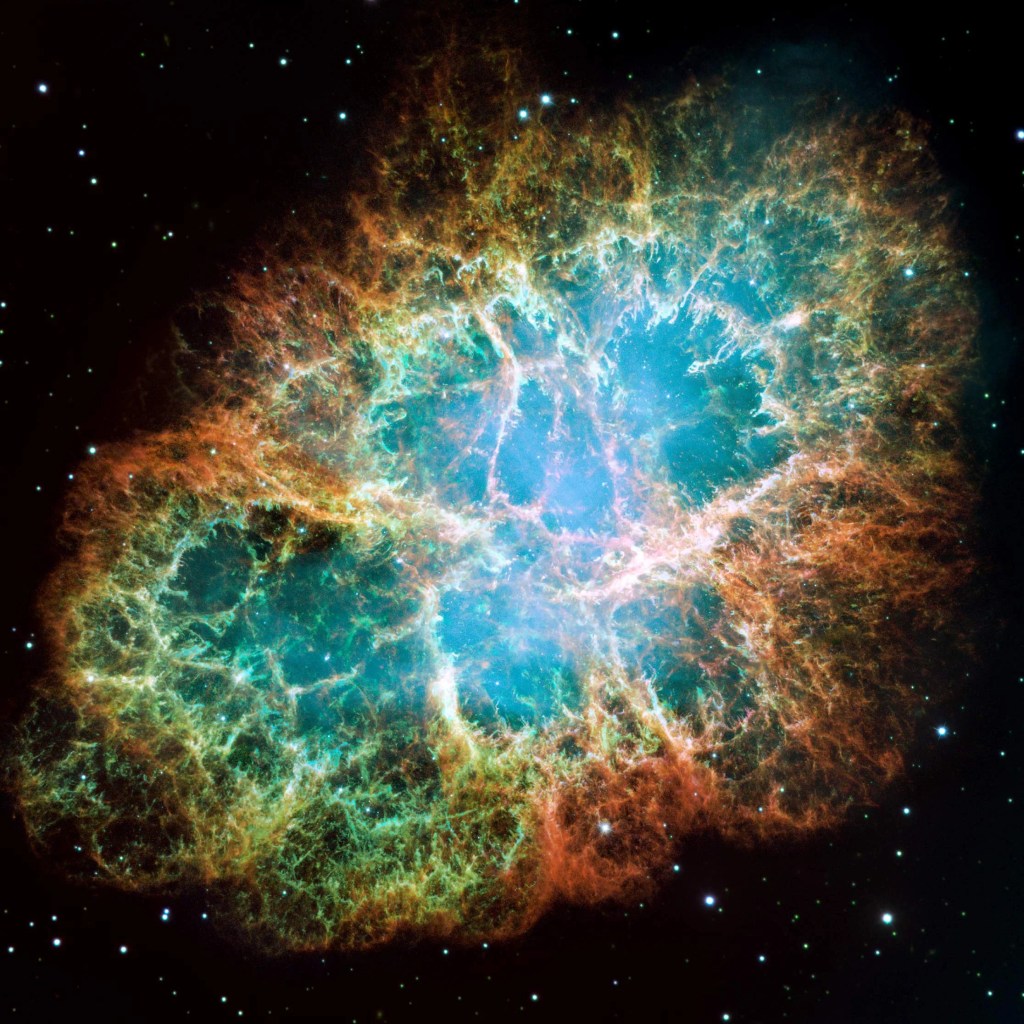
Better known as the Crab Nebula, Charles Messier originally mistook Messier 1 for Halley’s Comet, which inspired him to create…
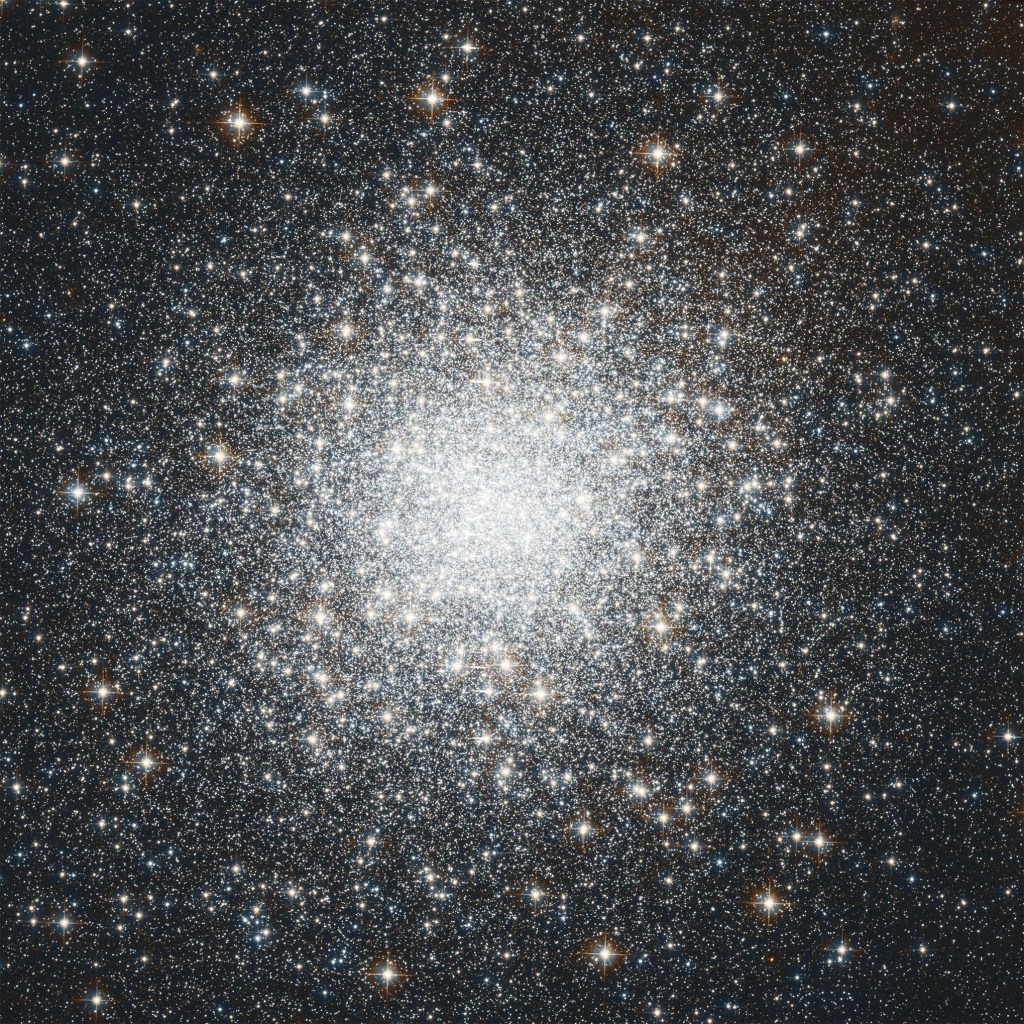
Hubble's image of Messier 2 is comprised of visible and infrared wavelengths of light.



























